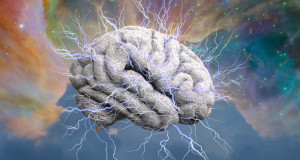For all of its good moments, a child’s early years can also feature several lowlights that are not remembered fondly. Up until recently, one common problem for young children was the chicken pox virus. In fact, chicken pox who so rampant that nearly every child developed it; it is estimated that 90% of US adults are immune to chicken pox do to having contracted it in their childhood years. With the advent of the chicken pox vaccine, however, the chicken pox virus has largely gone the way of measles, mumps and other former childhood menaces. The incidence of chicken pox in children has plummeted 90 percent since the vaccine’s 1995 introduction.
What does any of this have to do with shingles? Well, chicken pox never actually leaves the body. Though its symptoms vanish relatively quickly, the varicella zoster virus (the official name for chicken pox) will remain in your bloodstream for the rest of your life. In most people, the virus stays completely dormant, never again bothering the host patient. Unfortunately, this foreign invader can come roaring back to life in some unlucky individuals, returning for a second act in the form of an even worse disease – shingles.
Causes and Symptoms
The force holding the chicken pox virus in check is the immune system, which neutralizes the virus by releasing certain antibodies. Unfortunately, the immune system is not immune (pardon the obvious pun) to the wear and tear encountered by the rest of the body. Some of this damage is unavoidable, and can be blamed on the body’s natural aging process. This decay can be greatly amplified by poor lifestyle choices and the presence of various diseases. Below are some of the common reasons why the body’s defense system can wither over time.
- Conditions such as diabetes, lupus and HIV, all of which suppress the immune system
- Radiation therapy, a common treatment for people with cancer
- Surgical procedures
- The side effects of organ transplants
- Chemotherapy, which is used to kill off cancer cells
- Constant stress
- Physical Injuries
When one or more of these factors have sufficiently weakened the immune system, the varicella zoster virus is given a prime opportunity to strike. When the virus does reactivate, it only returns in the form of shingles. The patient does not have to worry about suffering a second bout with chicken pox. It is estimated that 1 in 3 adults will contract shingles during their lifetime.
Despite being a condition that primarily affects the skin, the first signs that the shingles virus has gone active often have nothing to do with your body’s largest organ (yup, your skin is not only classified as an organ, but is the also the largest organ in the body). The patient may first develop a headache or sensitivity to light, accompanied by flu-like symptoms. As the disease progresses, a swath of the patient’s skin becomes noticeably itchy and painful. A rash soon develops on this afflicted area, and quickly morphs into a cluster of fluid-filled blisters. When the shingles virus enters its closing stage, these blisters start to crust over before fading away. In total, this unpleasant ordeal generally lasts about three to four weeks.
In addition to being quite painful and itch inducing, shingles blisters often give off a burning sensation. These blister crops can form anywhere on the body’s surface, though they will only strike one side of the body. If shingles blisters develop on the left side of the patient’s stomach, for instance, they will not spread to the stomach’s right side. Some patients experience several additional symptoms, such as fever, chills, fatigue, headache and pains throughout the body.
Most people who contract shingles only suffer through this condition once. This doesn’t mean, however, that patients experience no complications after the shingles virus goes dormant. In some cases, a person must still contend with lingering pain, itchiness and numbness long after the shingles blisters have dissipated. This condition, known as postherpetic neuralgia (PHN), can last anywhere from 30 days to several months. Patients usually complain of burning pain in the forehead and chest areas, symptoms caused by damaged nerve fibers in the affected areas. Roughly 10 to 15 percent of shingles cases result in PHN, and most patients are cured of this condition within a year.
Treatment
A case of shingles is typically treated with a combination of three types of medications – antibiotics, over-the-counter pain killers and antiviral medicines. Antibiotics are used to prevent harmful bacteria from infecting shingles blisters. Painkillers, of course, help alleviate the constant pain from shingles, as do antiviral medications. Antiviral drugs may also accelerate a patient’s recovery.
For postherpetic neuralgia, doctors rely on a mix of antidepressants, topical anesthetics, anticonvulsant medicines and opioids. Though developed to fight depression, antidepressants can be a useful tool for controlling pain caused by damaged nerves. Topical anesthetics can be bought with or without a prescription, and work by numbing the surface of the skin when applied. Anticonvulsants are primarily used to limit seizures, but can also be an effective weapon against chronic pain. Opioids are a heavy-duty class of pain reliever that diminish the pain signals transmitted to the brain.
There is no denying that shingles is a highly distressing condition, one that bothers the patient for weeks before subsiding. Fortunately, recurring shingles is fairly rare, and patients have a number of treatment options to help dull their symptoms.
 Natural Knowledge 24/7 Educate yourself with nutrition, health and fitness knowledge.
Natural Knowledge 24/7 Educate yourself with nutrition, health and fitness knowledge.






